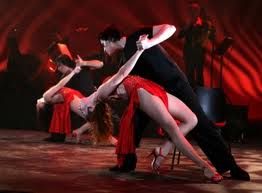In brothels and slums in the nineteenth century Buenos Aires, and the fusion of Spanish, Uruguay, and African dance and music styles and create the tango and the famous sensual dance from Argentina.
The social dance, depends to a large extent on improvisation and formed around the close, almost intimate interaction, and communication between partners must be impeccable, because the dance did not specify the patterns and not a "key step" from which to build. However, it was not necessarily an expression of sensual or sexual, and there are tango clubs were for men only.
Chose the immigrant communities in Europe, Argentina in the 1890s until the music, which was initially just one of many methods that went by the name "Tango". And quickly became a fad of the lower class, who danced in the halls of overcrowded, resulting in the closure - Communication and casual style of dance. The music has become the most popular tango in Argentina, which includes more than one-third of all Gramophone records and sheet music sold between 1902 and 1920.
By 1912, the music and dance that began to spread from the Barrios of dance institutions and the middle class and even upper-class nightclubs in all parts of Argentina. From there madness spread quickly to Paris, London, and Berlin, where she danced with less intimate contact between partners. In Finland, found a new home dance and expression, played in the keys are small and conducted in the flow, and horizontal patterns, now known as the Finnish Tango, but grew to the height of its popularity in the 1950s. In English for tango evolved to be similar to Hall, competitive and largely unregulated, with strict rules to introduce more movement intermittently not seen in Argentina, as well as sudden head movement is often seen in the film. New performance tango dancing on the New York amendment also includes a wider range.
At the same time in Argentina, and became closely related to dance with Carlos Gardel night Triste mi, tragic love song. Has taken the music in the 1920s by the classical musicians who gave it the flavor more complex and elegant, and slowed down the pace. Then fell from favor during the 1930s and 1940s, only to revive once again along with the nationalist fervor of the year Argentina Peron. Dealt with rock and roll, along with the economic struggle in Argentina, and they strike again, and fell steadily in popularity until recently enjoyed renewed in the 1980s.
In the 1990s, given the emergence of electronic music and the world is facing a new tango. Combines elements of jazz with popular music from artists such as Gotan Project, Tom waits, and Portishead, and Neuvo Tango appealed to an entirely new generation of dancers. This was the pattern as a result of a systematic analysis of the physics and science of movement and the tango, which stressed in turn on an axis and direction changes.










No comments:
Post a Comment